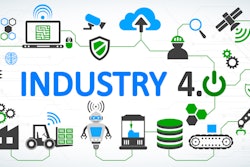
The ongoing transportation capacity crunch has been talked about ad nauseum, so there’s plenty of ink to spill about the headaches (not to mention busted budgets) it’s created for shippers.
But on a basic day-to-day level, for shippers, freight forwarders, brokers, and anybody else tasked with procuring transportation service, a chief impact of these capacity constraints has been forcing quicker decisions. Available space on a ship today will be gone tomorrow, for example, so the luxury of weighing pros and cons, running decisions by colleagues, or searching for alternatives has mostly vanished.
What many have come to realize, though, is they can’t really make these quicker decisions without a better, more holistic view of what’s going on within their own supply chain and transportation networks.
For shippers, in particular, they need to know where their materials, parts, or finished products are, and where they need to be and when. Do they have to find another source for a certain component? Do they need to ramp up production? Do they need to ramp down production? These types of questions can only be answered if they have a complete view of their supply chain.
For forwarders and brokers trying to separate themselves from the pack by providing top-tier customer service, helping shippers answer these questions is critical.
Thus, shippers and logistics service providers have been studiously evaluating, and in many cases adopting, new platforms and tools they hope will provide answers to these questions and provide that holistic view of their supply chain and logistics networks.
Squeezing the most out of new platforms and legacy tech alike
There’s a bevy of incredible new tools available today that can help the aforementioned parties better navigate the modern transportation environment, cut costs, provide visibility, track inventory — you name it.
However, to make the most of either these new platforms or older legacy workhorses, the right plumbing needs to be installed. Without the right tool to connect a shipper or logistics providers’ platforms, it’s impossible to realize the full potential of the software packages being adopted.
Software purchased to solve problems will certainly provide incremental, and in many cases substantial, improvements over handling key facets of business manually or with inappropriate tools. However, technology that looks and sounds great — and tech that is objectively great in its own right — often can be limited in its ability to create transformative value for your company or within your supply chain by itself.
That’s not a good use of capital.
The goal should be to let the sum of the parts flourish, whether you’re still banging away on tried and true older platforms or if you’ve invested in the latest and greatest.
The point is: The gritty, dirty work of connecting those systems (whether old or new), and thus squeezing the most of them, will yield the biggest gains for your company, your efficiency, your customer service, and your employees.
Is it sexy? No. No one’s going to put out a press release about back-end tech or show off their integration work at a trade show booth.
However, investing capital, energy, and time to do the foundational, behind-the-scenes stuff that nobody cares about often adds the most value.
You can’t enjoy the new jacuzzi without working plumbing
Supply chain and freight visibility tools are a great example of the power of doing the gritty work. Visibility is a huge, burgeoning segment within supply chain and freight right now, and some of the visibility platforms are seeing their valuations soar into the billions, rightly so.
Visibility is also one of the competitive advantages that Toyota had over its auto rivals last year. The company’s visibility into the semiconductor chip market and its own needs for chips is what helped propel it to become the largest car manufacturer in 2021.
Visibility in its own right is obviously valuable to any shipper or forwarder, even if your visibility platform is disconnected from other applications.
It’s one thing to be able to log into somebody else’s app and see these disconnected updates on shipments. But it becomes a mighty tool, and you’re able to make decisions much faster, when you can view your visibility platform on top of the systems you’re already using to perform tasks like demand forecasting, capacity planning, and rate management.
The same thing is true on the forwarder side. As separate pieces, having visibility into where shipments are, where vessels are, which ones are queued up, which ones are unloading, where containers are, or where pallets are being offloaded from airlines — that’s all very valuable.
Seeing it all together, however, becomes a key differentiator for forwarders in dealing with their customers, and having instant access to that information enables them to make better, more informed, faster decisions.
Here’s one more example, not related to supply chain (at least not directly). A friend recently paid a contractor a few thousand dollars to replace the main water line of her home. Is there much joy there? Not really. Is it something functional she gets to interact with every day? Again, no. Does she even get to look at it? Probably (hopefully) never.
But replacing the pipe was a necessary expense to have a basic necessity, running water, in her home.
Think of your supply chain tech stack the same way. Would a new jacuzzi be a fun and rewarding purchase? Of course. But you can’t really use the jacuzzi as intended without a functioning main water line.
You could conceivably carry buckets of hot water to and from, much like your team does in transferring data into and out of the platforms and applications you use in your business. But that doesn’t sound remotely sustainable.
In the case of your logistics network, the plumbing is akin to ensuring you have the proper integrations to connect the dots within your other platforms — and thus being able to enjoy that new tech stack (or jacuzzi…) you invested in to help propel your department forward.
















